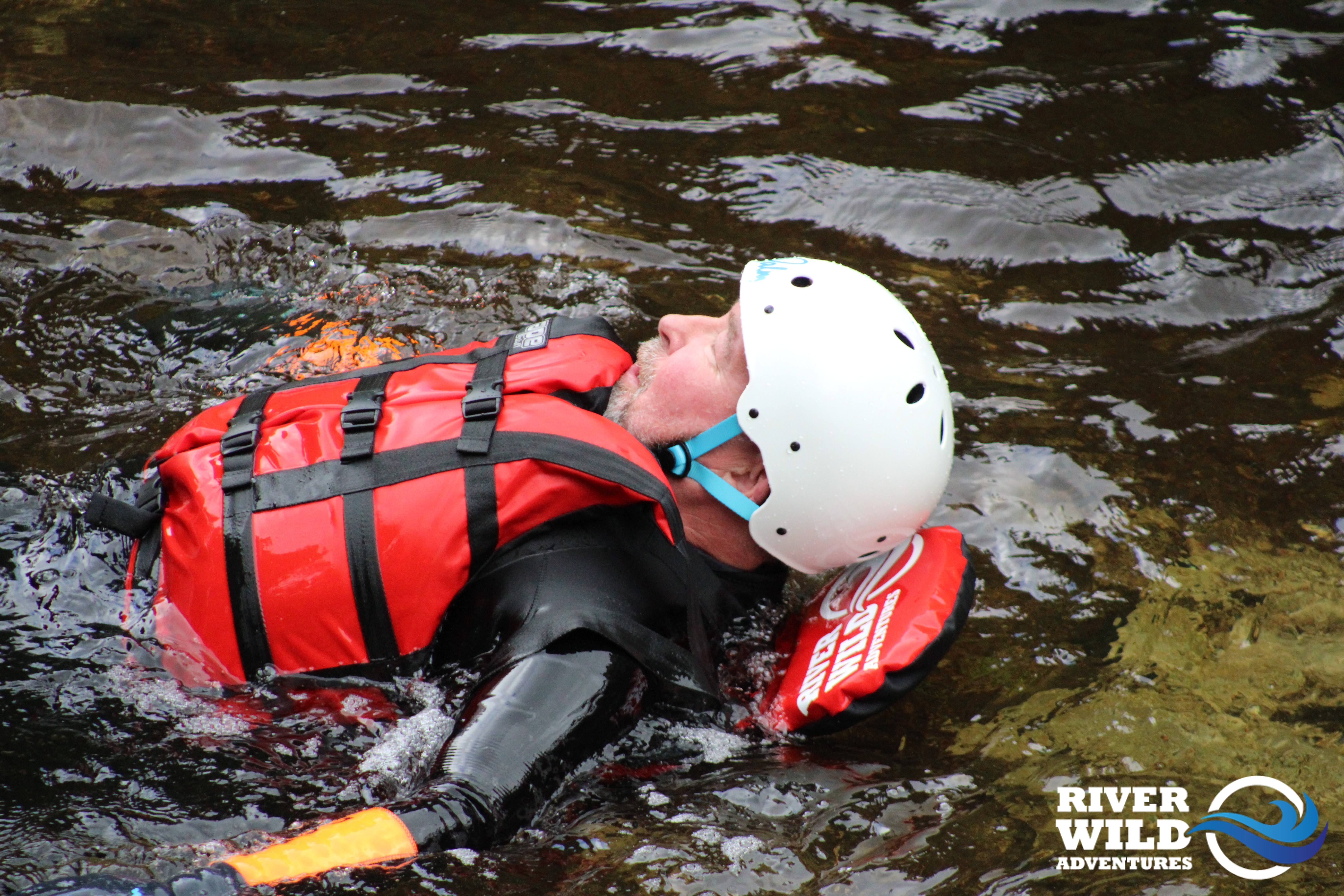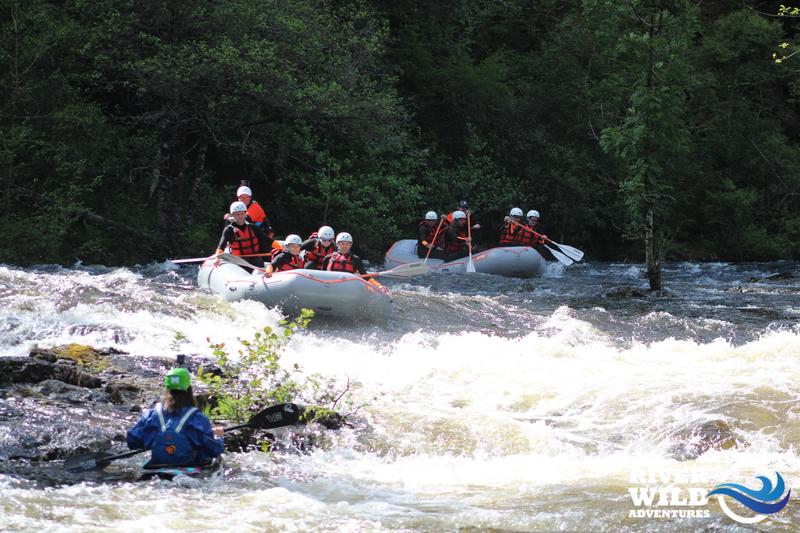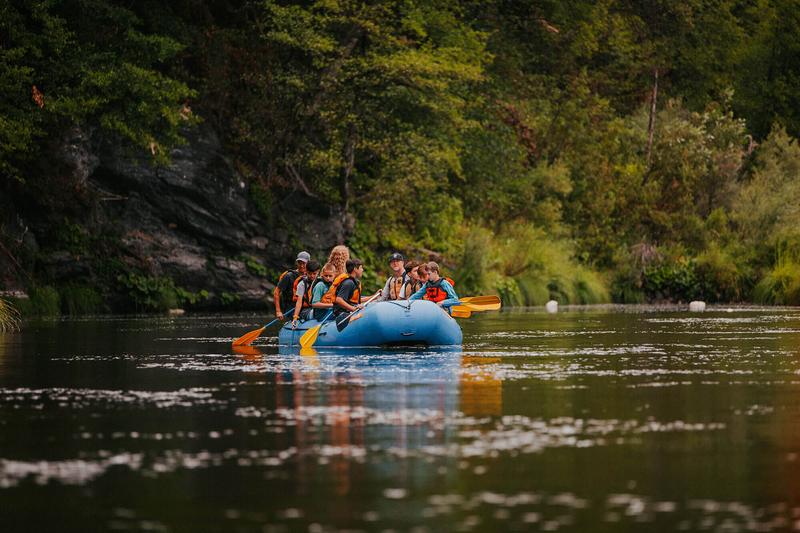What to Wear for White Water Rafting in Scotland
When you book onto a white water rafting trip you should be focused on the excitement and anticipation of your Scottish adventure. The last thing you should be worrying about is whether you’ve got the right kit with you. However, it can be hard to know what to bring, especially if you’ve never rafted before (or you’re not sure of what the Scottish conditions might be like!). So here’s some of the key pieces of information that will help you to bring the right things with you and be reassured that you’re prepared to enjoy yourself and get the most out of your Scottish rafting adventure.
White Water Rafting Clothing
Environment will be a key factor that dictates the kit provided by your rafting company. Even if you’ve been white water rafting in a different country before, the kit will likely be different for your Scottish adventure. Each company will have their own preferences for what items they provide to you but there are some standard things that you can expect to receive. Scottish white water is likely to be reasonably cold, even in the height of Summer (expect a range from around 4 - 14C over the year) so rafting companies want to make sure that you’re as warm as possible. Here are the standard items you can expect:
Wetsuit
Your wetsuit will be made from neoprene and will be somewhere between 2 and 5mm thick. Neoprene isn’t the sexiest fabric in the world but it’s incredible in water. A wetsuit is designed to keep you warm once it’s wet. As soon as the suit touches water, it absorbs the water into its fabric and holds it there. It then uses your body heat to warm up that water layer and hopefully keep you comfortable for the duration of your white water rafting adventure. It’s important to note that it takes a minute or two to warm up so that first contact with the river will likely feel the coldest! A good fitting wetsuit is designed to be quite snug to let the thermal mechanics work most effectively. That means it will likely be a little bit tricky to put on at the beginning of your trip but worth the effort. They’re also not infallible so you might still end up feeling a bit cold depending on the weather conditions. If you know yourself to be extremely susceptible to cold (for example if you have circulation issues) then let your company know when they’re kitting you up so they can offer you more layers.
There are lots of different styles of wetsuit, which mainly shows up in the position of the zip. Some have a long zip up the back, some have a shorter zip across the chest, some have no zips at all! You will be given information about the style of wetsuit you’ve been given when the suits are being handed out. Be sure to pay attention, you don’t want to be the target of mockery by emerging from getting changed to find you’ve got your suit on inside out and/or back to front! Scottish white water guides thrive on “banter” so they will definitely have something to say about it!
Buoyancy aid
A buoyancy aid (often referred to as a BA) is exactly as it sounds. It’s intended to help you stay afloat when you’re in water. BAs come in various different styles, ranging from clips or zips at the front to a pullover without any closures at all. They’re designed to keep your body on the surface of the water and so some brands will have different BAs for different weights of people whereas others have a very high buoyancy capability (measured in kilonewtons) with a one-size-fits-all cut.

If you happen to depart your raft (whether intentionally or otherwise), your buoyancy aid will be used to bring you back into the boat. The safest method to pull someone back into a raft is to take hold of the buoyancy aid straps and use some simple physics to haul you in with the least amount of physical effort or strength required. Therefore, make sure that your buoyancy aid is nice and snug before heading out on your white water rafting adventure. If you’re with a friend you can also buddy up to help each other tighten straps (and your guide will also have an eye on you to make sure you’re safely kitted up).
Helmet
To keep your head nice and protected during your white water rafting adventure, you will be given a helmet to wear. These range in cuts and method of adjustment but they’re all pretty standard – put it onto your head, do up the chin strap and make sure it’s a snug but comfortable fit.
The awesome extras that some rafting companies offer
Beyond the standard items listed above, some white water rafting companies (like River Wild Adventures) will offer some additional kit to make your experience even more comfortable and enjoyable.
Neoprene socks
These are exactly as the name suggests, socks made of neoprene (wetsuit) material. White water rafts have holes in the floor (this makes them “self-bailing”, which means the water that comes in has somewhere to get out), which is a clever design but it means that your feet are going to be wet. Guaranteed. Neoprene socks give you some comfort from this experience and help to keep you warm and focused on your white water rafting adventure.
Shoes
You can go rafting in any pair of closed-toe shoes so a pair of old trainers is fine for your white water adventure. However, you might not want to have to transport a pair of wet shoes home with you (or have a pair of shoes with you that you can afford to get wet). Some white water rafting companies (like River Wild Adventures) will offer you designated footwear to save you the hassle.
Neoprene gloves
Hands get cold sometimes, especially if they’re getting splashed with cold water whilst holding onto a white water rafting paddle. In their height of summer that’s not a big deal but sometimes it’s nice to have some added comfort. Some white water rafting companies (including River Wild Adventures) will offer neoprene gloves to save you from chilly fingers.

Glasses straps
If you wear glasses and you need them to see during your white water rafting adventure, a glasses strap can be an absolute saviour! Do not trust that your glasses will stay on your face throughout the trip without a strap, even if you think they fit you perfectly! Some companies (like River Wild Adventures) will provide one for you, which alleviates some stress if you’ve forgotten your own.
Neoprene skull cap
If the conditions are a little colder than usual on the day of your Scottish white water rafting adventure, some companies (including River Wild Adventures) will have neoprene skull caps for you. These are usually a thin layer of snug-fitting neoprene (like a swim cap) that goes onto your head underneath your helmet.
Splash jackets
If the environmental conditions are a bit windy or rainy (and let’s face it, that’s often a possibility in a Scottish white water rafting adventure!) then it can be nice to have an extra layer on top of your wetsuit. This is where the option of a splash jacket can be very welcome, if your chosen company has them. These jackets are usually a thin, cagoule style material that will give you a little bit more protection from the elements. They usually come in different sizes to ensure a comfortable fit.

What to wear underneath your rafting wetsuit
This is a very common question so please don’t worry if you’re wondering! Neoprene (the wetsuit material) is designed to keep you warm by being close to your skin. Therefore, not wearing much under your suit is a good idea! If it was your own suit then going commando would be entirely acceptable but you probably won’t want to do that in a commercial wetsuit! A small layer like a swimsuit is absolutely perfect. You can also wear normal underwear or thin sports gear as long as it’s not cotton. Cotton gets very cold when it’s wet so it’ll do the opposite of what you want. Bear in mind that whatever you wear underneath will get wet!
What to bring for after your trip
When you take off your wetsuit, your skin will likely be damp, even if you elected not to go into the water. Therefore, a towel or changing robe can be really handy. Beyond that, bring a change of clothes (ideally something warm that’s easy to put on if your skin is still a little damp!). If you’ve had to use your own shoes for your white water rafting adventure then make sure to have a dry pair of shoes for afterwards. It’s also a good idea to have a bag to put all of your wet gear into for the journey home.



